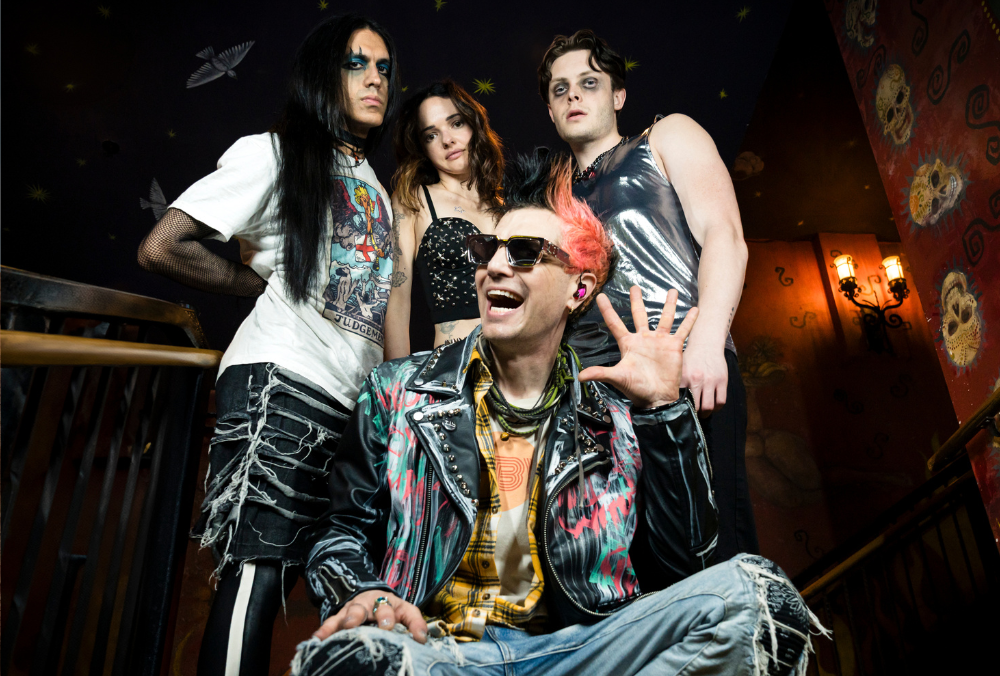Studio Ghibli doesn’t just produce cinematic animated features. Since 2006, they have released animated films and TV from around the world under the Ghibli ga Ippai label, in collaboration with Walt Disney Studios Home Entertainment and Cinema ANGELIKA. Let’s take a look at the classics and arthouse favorites found in this library.
The King and the Mockingbird
The King and the Mockingbird is a French animated fantasy film by Paul Grimault, released unfinished in 1952 before its completion in 1980. The film is about a chimney sweeper and a shepherdess who fall in love and are trying to escape from a tyrannical king inspired heavily by Adolf Hitler. The King and the Mockingbird is considered a masterpiece and greatly influenced Hayao Miyazaki’s films like The Castle of Cagliostro.
Wrinkles
Wrinkles is a 2011 Spanish film by Ignacio Ferreras. It is based on a comic book of the same name by Paco Roca, and it focuses on the friendship between two old men, Emilio and Miguel, who live at a retirement home. Wrinkles is an adorable tale about friendship and appreciating life as you get older. The film was nominated for a few awards, including the European Film Awards for Best Animated Feature Film.
Margo the Mouse
Margo the Mouse (1985) is a Polish compilation movie created and directed by Eugeniusz Kotowski. The film consists of eight episodes from the original TV series, centering on the adventures of a little mouse named Margo. Margo lives in a big tree with her fellow neighbors: a squirrel named Eliana and Dennis, a dormouse. The film has zero dialogue, and so the stories are told through the visuals.
Russian Animated Films
Studio Ghibli has released several Russian animated films, including Roman Kachanov’s Cheburashka (1963-83) and I. Ivanov-Vano’s The Humpbacked Horse (1947). One film worth mentioning is My Love, a 2006 short film by Aleksandr Petrov. The film follows the story of a teenage boy who is infatuated with two different women in the 19th century. My Love is known for its Romantic realism, in which the characters and background are drawn realistically to depict actual people and locations.
Another Russian film distributed by Ghibli is Lev Atamanov’s The Snow Queen (1957). This film is about a girl searching for her friend who happened to be kidnapped by the Snow Queen. The Snow Queen is said to have inspired Princess Mononoke, with San resembling Gerda and Lady Eboshi being like the Snow Queen.
Mr. Bug Goes to Town
Mr. Bug Goes to Town (1941) was produced by Fleischer Studios. In an insect metropolis at a vacant lot in Manhattan, Hoppity, a grasshopper, competes with a corrupt business owner C. Bagley Beetle for the affection of the pretty bee, Honey. Miyazaki's amusing review of Mr. Bug Goes to Town, included in the book Starting Point, 1979-1996, describes the film as “wonderful and incredibly stupid.”
Animal Farm
Animal Farm is a British-American 1954 film produced by Halas and Batchelor and based on George Orwell’s novel of the same name. A group of animals on Mr. Jones’ farm, led by the hog, Old Major, discuss a possible rebellion against Mr. Jones for his abuse towards them. When Old Major dies, Napoleon, a pig, causes an uprising, resulting in the farm’s productivity faltering.
Michel Ocelot's Films
Michel Ocelot is a French animator and director with several films in the Ghibli Museum Library, such as Ciné si (1989), Azur & Asmar (2006), and his latest, Dilili in Paris (2018). He uses both traditional and computer animation with a highly distinctive style. He has won countless awards, including Best Animated Feature at the 2007 Zagreb World Festival of Animated Films for Azur & Asmar.
His 1998 debut film, Kirikou and the Sorceress draws from West African folklore and is about how a young boy saves his village from Karaba, an evil witch. The film won several awards, including Best Animation Film in the 1999 Annecy International Animation Film Festival. Another work worth mentioning is the Tales of the Night (2011), where Ocelot uses computer silhouette animation. The story takes place at a small theater where a girl, a boy and a cinema technician present fairy tales such as The Werewolf” and “The Boy Who Never Lied” to one another.
Sylvain Chomet's Films
Sylvain Chomet is a French animator who directed The Triplets of Belleville (2003) and The Illusionist (2010). The Triplets of Belleville is about an elderly woman, named Madame Souza, who is trying to rescue her grandson, Champion who was kidnapped by the French mafia for gambling. In The Illusionist, a struggling magician visits a remote Scottish island and encounters a young woman who is mesmerized by his illusions. Both telling their stories without intelligible dialogue, Chomet’s two films won several awards and were nominated for Oscars.
Frédéric Back's Films
Frédéric Back is a Canadian director who won two Academy Awards for two of his short films, both included in the Ghibli Museum Library: Crac! (1982) and The Man Who Planted Trees (1987). In Crac!, Back tells the life story of a rocking chair. The Man Who Planted Trees is based on Jean Giono’s short story. In this film, a young man visits a shepherd named Elzéard Bouffier, who is restoring a desolate landscape by single-handedly planting trees.
Wallace and Gromit/Shaun the Sheep
Nick Park and Aardman Animation are best known for the Wallace & Gromit series, which focuses on the adventures of an eccentric inventor named Wallace and his anthropomorphic dog Gromit. Several of his Wallace & Gromit films were distributed by Ghibli, including A Grand Day Out (1989), The Wrong Trousers (1993), A Close Shave (1995) A Matter of Loaf and Death (2008) and the spin-off TV series Shaun the Sheep (2007-2013). These award-winning films make amazing use of hand-crafted stop-motion animation.
Isao Takahata & Hayao Miyazaki's Early Work
A few of Isao Takahata and Hayao Miyazaki's pre-Ghibli works are included in the Ghibli Museum Library. Panda, Go Panda (1972-73), about a Papa Panda and his son living with a little orphan girl, is often seen as a predecessor of My Neighbor Totoro.
The TV series Lupin the Third Part 1 (1971-1972), the first of many anime based on the manga by Monkey Punch, was reworked heavily midway through its run by Miyazaki and Takahata; Ghibli holds the right for theatrical screenings but not home video releases. Isao Takahata also produced a beloved anime adaptation of Anne of Green Gables (1979). These earlier works by Isao Takahata and Hayao Miyazaki were foundational pieces in their development as animators.
About The Author

